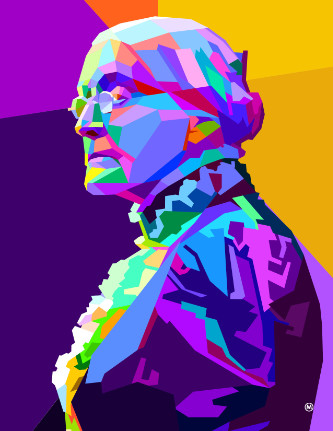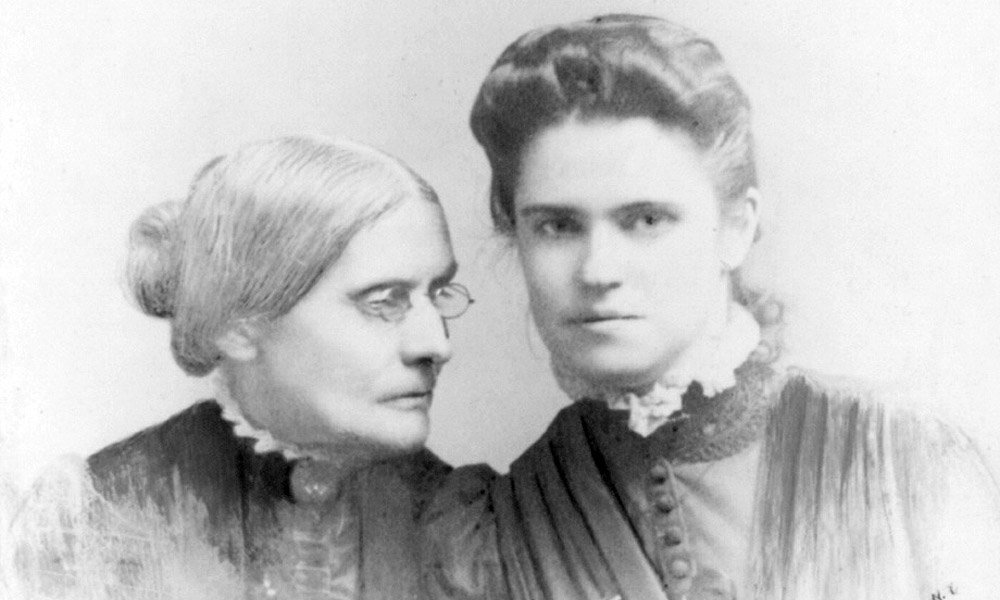February 15 marks the birthday of American civil rights and social justice leader Susan B. Anthony, who has important ties to the city and the University of Rochester.
Susan B. Anthony was born in Massachusetts but settled in Rochester, New York, in 1849. In 1900, she led a successful campaign to have women admitted to the University of Rochester by raising $50,000 in pledges. This included the cash value of her life insurance policy.
Though Anthony did not live to see women gain the right to vote, her work with Elizabeth Cady Stanton in drafting and introducing the 19th Amendment, which prohibited the denial of a US citizen to vote based on sex, laid the foundation for its ratification fourteen years after her death.

Anthony is buried in Mount Hope Cemetery; during election season, people visit her gravesite and many place their “I Voted” stickers on her headstone. Her house on 17 Madison Street in the city of Rochester has been preserved and is now known as the Susan B. Anthony House and Museum.
Today, the University is a collector, curator, and steward of Anthony’s legacy:
- The River Campus Library’s Department of Rare Books, Special Collections, and Preservation is home to many important holdings related to Anthony’s role in women’s suffrage, including several collections of letters, personal items, and suffrage memorabilia.
- The Susan B. Anthony Institute for Gender, Sexuality and Women’s Studies is dedicated to addressing curricular and scholarly issues throughout history and in contemporary society.
- The Susan B. Anthony Center works to bring awareness to—and advocate for—social justice and equality by translating research into policy through collaborations with the University community and partner organizations. The center pays tribute to Anthony’s efforts to win women admission to the University at their annual Legacy and Leadership Awards.
‘May their numbers increase…’
The University was founded in 1850 as an all-male institution. In the 1880s, women began to petition the University to open its doors to female students. Finally, in 1898 the board of trustees voted to allow women to enter the University if they defrayed expenses by raising $100,000 (approximately $2 million in today’s money).
A committee of women led by Helen Barrett Montgomery raised $40,000 over the next two years. In June 1900, the board agreed to admit women students that September if the women could secure another $10,000. During the summer of 1900, the committee was able to raise another $2,000, but the day before the deadline they were still $8,000 short.
At this crucial point, Anthony took charge of collecting the remaining money. She solicited the first $2,000 from her sister Mary, the second from Sarah Willis, and the third from Rev. and Mrs. William Channing Gannett. Still short $2,000, Anthony pledged her life insurance policy, thus guaranteeing the admission of women to the University in the fall of 1900.
- Read the full story of how Anthony worked to get women admitted to the University.

Celebrating a ‘heroic life’

The 1866 Woman’s Rights Convention was the first held since the beginning of the Civil War. The call to the convention reflects Stanton and Anthony’s concern that the proposed fourteenth amendment would extend suffrage to black males only. In an enclosed note to Amy Post, Anthony writes: “I hope you will be at the convention. We shall need every woman & man who really believes now is the hour for woman to demand the ballot.”
On November 1, 1872, Anthony, her three sisters, and ten other Rochester women registered to vote after persuading the election inspectors that the Fourteenth Amendment gave them that right. Four days later they cast their ballots, and on November 18, Anthony was arrested for voting illegally.
About voting in the election, Anthony wrote:
Rochester Nov. 12th 1872 My Dear young Friend Yes you shall have the Autograph of the first woman who legally registered and voted in the state of New York under the 14th Amendment, which lifts the franchise of the citizen above the power of the states to deny, as did the 13th freedom of the person. All persons are citizens–and no state shall deny or abridge the citizen[’s] rights–Respectfully yours Susan B. Anthony
- Read more about Anthony’s background and life.
Mural graces campus tunnel system
In spring 2015, Rochester artist Sarah Rutherford created a University-themed mural, which includes an image of Susan B. Anthony as both a young and an old woman, an image of a present-day young woman, and the University’s official flower, the dandelion. The project is part of an ongoing initiative to bring more public art to the River Campus.

Center brings Susan B. Anthony into the 21st century with #SueBSays
“Failure is impossible,” Anthony proclaimed, creating a motto that carried the women’s suffrage movement to success. But while much is known about the famed suffragist’s stance on social equality and slavery, she also had lots to say on a variety of issues that still resonate today. In summer 2015, researchers from the Susan B. Anthony Center launched a Twitter campaign aimed at connecting social media users with her opinions on an array of social issues, under the hashtag #SueBSays.
“While reading through her personal letters, we saw that her insights are as relevant today as over 100 years ago,” says Catherine Cerulli, then-director of the Susan B. Anthony Center. “That is why we thought Twitter was the right channel to present her thoughts on issues we still struggle with today and a great way to bring her into the 21st century.”
The campaign, posted by the center’s Twitter account at @UofR_SBAC, coincided with the 95th anniversary of the signing of the 19th Amendment, which granted women the right to vote.
#SusanBAnthony was relentless in her pursuit of justice and equality for all #SueBSays pic.twitter.com/bJcPglofPc
— Susan B. Anthony Ctr (@UofR_SBAC) August 26, 2015
This post was originally published on February 12, 2016, and has been updated.




